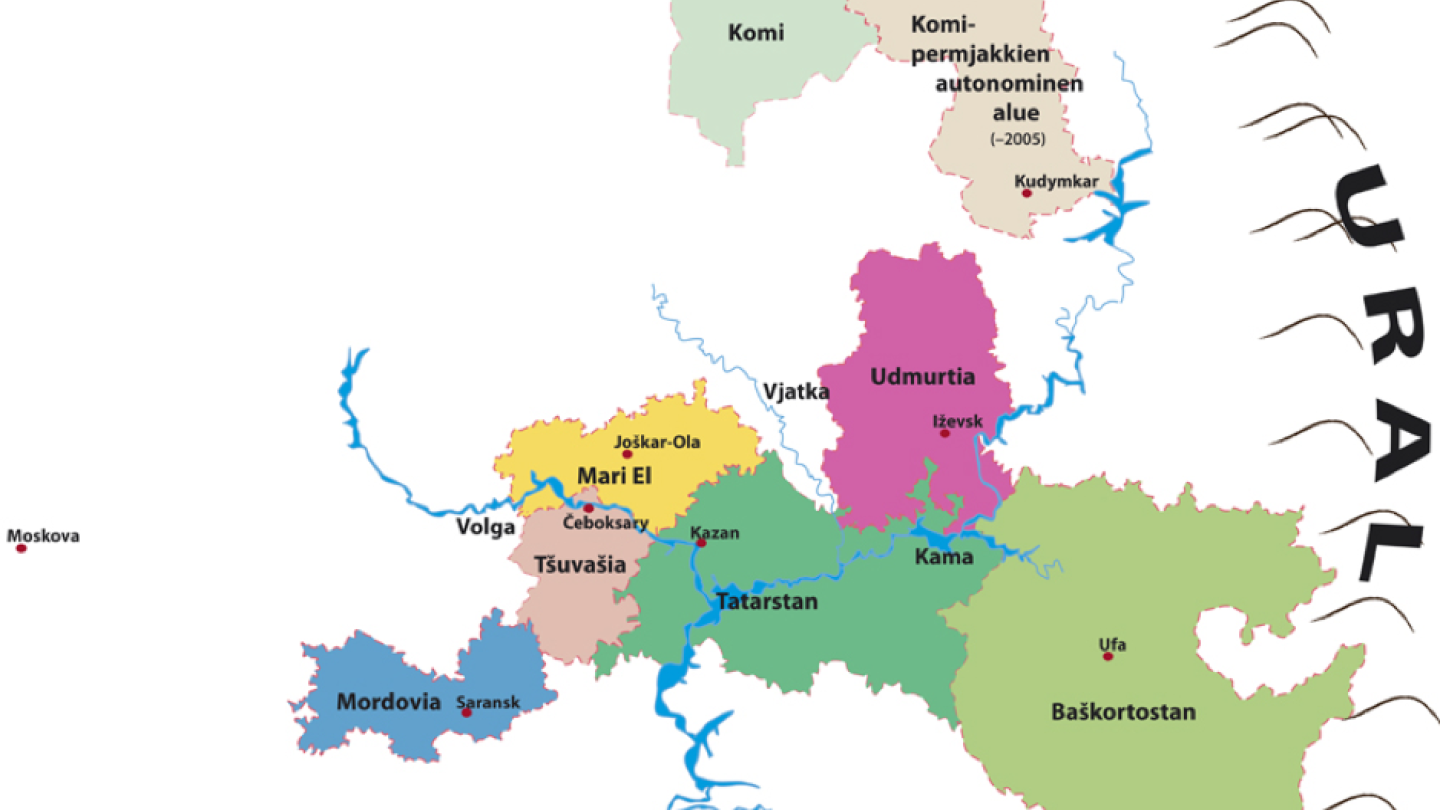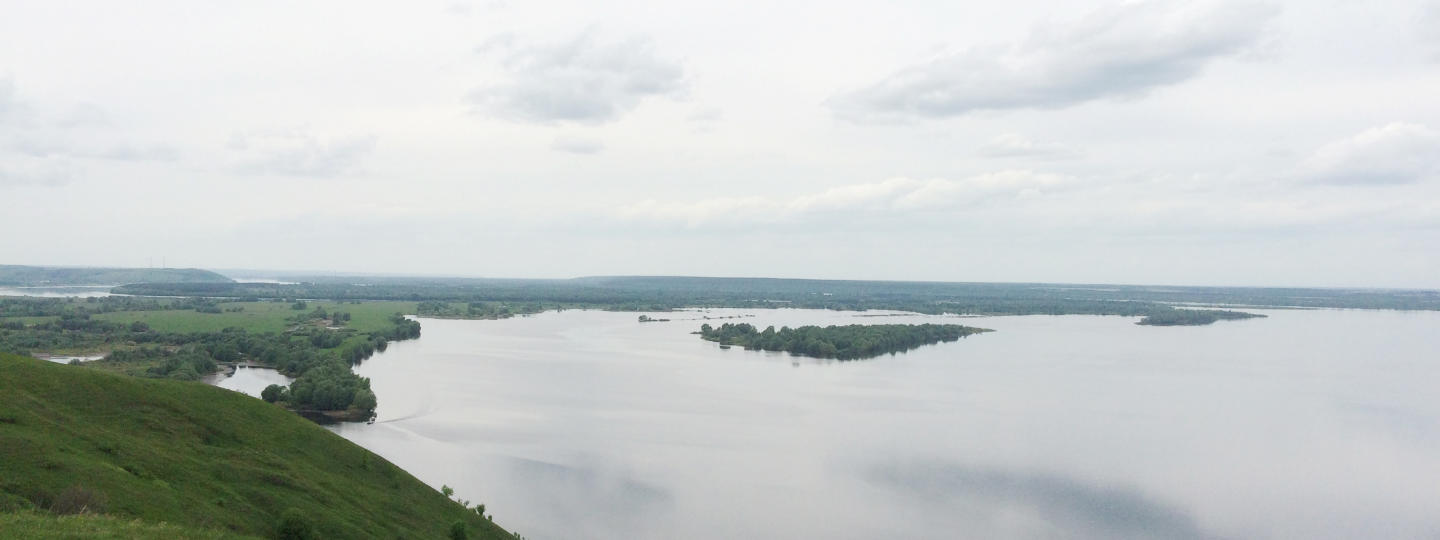The Research Unit for Volgaic Languages operates under the Department of Finnish Language and Finno-Ugric Languages at the University of Turku. The Research Unit studies the Finno-Ugric languages spoken in the region of the Volga River and Kama River (Erzya, Moksha, Mari and Udmurt) in Russia. In addition, the Turkic languages of the region (Chuvash, Tatar and Bashkir) are studied for comparative purposes.
The Research Unit carries out basic research that focuses on the endangered languages within its research field. The most important research topics are vocabulary, word formation and morphosyntax as well as development and change in the minority literary languages. Compiling and editing dictionaries as well as creating electronic language corpuses also constitute an important part of the activities of the Research Unit. The Research Unit’s researchers participate in the thesis supervision process and conduct teaching that is based on their own research work.
The aim of the Research Unit is to promote scientific collaboration between the University of Turku and the universities in the Volga-Kama region. This has been realised primarily in the form of visits by researchers and doctoral candidate students from both countries. In its joint projects, the Research Unit seeks to support researchers who represent linguistic minorities in their role as sovereign masters of their native language and as researchers at an international level. One important activity is organising symposiums on the themes related to the Volga-Kama region’s minority languages every 2–3 years.
The Volga-Kama region is multilingual. The Finno-Ugric and Turkic minority languages spoken there are under strong pressure from Russian. The current population is bilingual (native language + Russian).
The position of the Russian language can be characterized as hegemonic: it is the language of instruction in schools except in the lowest classes, and the digital media landscape has little room for minority languages. The situation for minority languages is particularly weak in cities, and the use of these languages in family communication is diminishing at an alarming rate in rural areas as well. Another key issue is the low prestige of minority languages. The mere fact that somebody outside of Russia is interested in and actively studying the smaller languages of the country is of significance to the linguistic self-esteem of minority language speakers.
The disciplines that focus on native languages, literatures and cultures have always strongly emphasised the use of one’s own language. The work of researchers who actively use their native language and publish scholarly texts in these languages also supports the status of minority languages as the languages of science and education. On the internet and social media, the use of minority languages has great potential that has not yet been fully realised.
Most of the world’s languages are in danger of being lost within the next few generations. The activities that aim to support the vitality of the Volga region’s minority languages are part of a global effort for preserving linguistic diversity. The endangered status of the languages also creates the need to describe the languages that are at risk as deeply as possible while this can be still be done.
The Research Unit for Volgaic Languages focuses on documentary and descriptive work that is based on written sources. The Research Unit produces research materials, dictionaries and structural descriptions of the endangered languages of the Volga region for the use of the international scientific community and other interested parties.
Finnish
- Metsässä kulki harmaaleninkinen tyttönen.
- Hänen pörröiset vaaleat palmikkonsa olivat kosteat näistä pisaroista.
- Astellen pitkässä ruohikossa hän kohotteli leninkinsä helmaa, jolloin märkä viileä ruoho miellyttävästi hipoi hänen päivettyneitä polviaan.
Erzya
- Вирьга мольсь куловонь тюсонь платиясо тейтерька.
- Пондакш валдо черьбулонзо ульнесть начкот неть ведьбайгетнень эйстэ.
- Сэрей тикшенть эзга молезь сон кепсесь платиянь алксонть, ды начко тикшесь мельс туицякс кельмевтсь чинь каршо калязь кумажанзо.
Moksha
- Вирьге мольсь серай платьяняса стирня.
- Сонь акша бзорана касанянза ульсть летькт тя путьняфкснень эзда.
- Сери тишева молемстонза сон кепсезе платьянц, и начка тишесь приятнайста кельмофнезень сонь шинь пидеф плманжанзон.
Meadow-Eastern Mari
- Чодра дене изи ӱдыр ошкылеш. Тудо сур тӱсан платьым чиен.
- Лушкыдемын шаланаш тӱҥалше ӱппунемже лупс дене нӧралын.
- Изи ӱдыр кужу шудо кокла гыч кая, платьыжым кӱшкырак нӧлталаш тӧча, кече дене шемемше пулвуйышкыжо ночко шудо логалешат, йӱштынракын да ласканракын гына чучеш.
Hill Mari
- Шӹргы мычкы луды платьеан изи ӹдыраш аш кедын.
- Тӹдын изи калявачвлӓжы вӹд патькалтышвлӓэш нӧрен шӹнзыныт.
- Кого шуды ло доно ашкедмыжы годым тӹды платье пачыжым лӱлталын, дӓ начкы шуды тӹдын аяреш йылен шӹцшы пылвуйвлӓжы мычкы юалгын тӹкнен миэн.
Udmurt
- Нюлэскытӥ мынэ пурысь платьяен пичи ныл.
- Солэсь тугаськем йырси пунэтъёссэ лысву шапыкъёс нюромытӥллям.
- Кузь турын пӧлтӥ мыныкуз со платья сӧзызэ ӝутыса возе но, шунды шорын пыжем пыдесъёсыз борды кот турын сайкытак йӧтылэ.
Komi-Permyak
- Вӧрӧт муніс руд платьеа нылочка.
- Пуэз вылісь киссян зэр воттезсянь сылӧн кудель рӧма дзугсьӧм чикисёккес вӧлісӧ вамӧмӧсь.
- Кузь турунӧт оськалікӧ сія видзис платье подувсӧ, и ва туруныс приятнӧя павкӧтліс сылісь сотчӧм пидзӧссэсӧ.
Komi
- Вӧрӧд муніс руд платьеа нывка.
- Дзугсьӧм еджыд кӧсаясыс сылӧн вӧліны ваӧсь тайӧ гылалысь ва войтъяссьыс.
- Кузь турун пӧвстӧд восьлалігӧн сійӧ лэптыштавліс платье подолсӧ, и ва туруныс приятнӧя ыркӧдіс сылысь гожъялӧм пидзӧсъяссӧ.
Chuvash
- Вӑрманпа кӑвак кӗпе тӑхӑннӑ хӗр ача иртсе пырать.
- Саланса кайнӑ сарӑ ҫӳҫӗ йӗпенсе пӗтнӗ.
- Ҫӳллӗ курӑк хушшинче утса пыма тивнӗрен кӗпи аркине ҫӗклесе утать, курӑк унӑн чӗр куҫҫине кӑмӑллӑн ҫӳҫентерет.
Tatar
- Урманда соры күлмәкле бер кыз бара.
- Аның тузгыган аксыл толымнары агачлардан тама торган тамчыларга чыланган.
- Озын үлән арасыннан барганда ул күлмәк итәген күтәрә һәм юеш үлән аның кояш ашаган тез башларына рәхәт салкынлык бирә иде.
Russian
- По лесу шла девочка в сереньком платье.
- Растрепавшиеся светлые косички её были влажны от этих капель.
- Шагая по высокой траве, она подтягивала подол платья, и мокрая трава приятно холодила её загорелые коленки.

